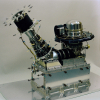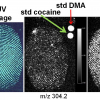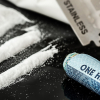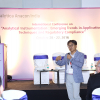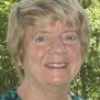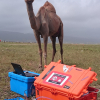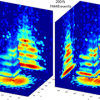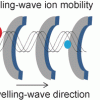Mass Spectrometry News
The Bruker MALDI Biotyper has received AOAC International approvals for two Official Methods of Analysis (OMA) in food microbiology; for pathogenic and non-pathogenic bacteria.
Advion, Inc. has reached several major sales milestones for its Compact Mass Spectrometer.
SCIEX Diagnostics has formed a joint venture with Zhejiang Dian Diagnostics to produce in vitro diagnostic reagents for the SCIEX Triple Quad™ 4500MD LC-MS/MS system.
The European Space Agency’s Rosetta probe became the first spacecraft to orbit the nucleus of a comet and later land on its surface. Its close-up studies of the comet using the on-board mass spectrometer continue to yield scientific insights.
Mass spectrometry can provide varied information from fingermarks and is close to use in the UK courts.
Markes International has announced the opening of a new Chinese subsidiary, Markes Instruments (Shanghai) Co., Ltd (玛珂思仪器(上海)有限公司).
Scientists from the University of Surrey, UK, have developed a rapid and highly sensitive fingerprint test based on paper spray mass spectrometry that can take just seconds to confirm whether someone has used cocaine.
Scientists from the EU’s Joint Research Centre (JRC) have carried out a multi-year study based on comparative metabolomics combined with chemometrics on carrots coming from different agronomic environments. The results highlight the potential of metabolomics fingerprinting for organic food authentication purposes.
Achema 2018 is inviting contributions to the Achema Congress and the PRAXISforums; deadline 22 September 2017.
A cooperation between Messe München India and the Indian Pharma Machinery Manufacturers Association (IPMMA) will collocate events jointly representing 600+ global and Indian companies.
Waters has announced that Brazil’s National Health Surveillance Agency (ANVISA) has approved certain of their chromatography and mass spectrometry systems.
Thermo Fisher Scientific and Biognosys’s agreement covers data-independent acquisition workflows.
Shimadzu and Phytronix to offer triple ion source (LDTD-MS/MS, ESI-MS/MS and APCI-MS/MS).
Thomas Rizzo and co-authors receive the 2017 Ron Hites Award for their paper “Infrared Spectroscopy of Mobility-Selected H+-Gly-Pro-Gly-Gly (GPGG)”.
Ryan Julian is the 2017 Recipient of the Biemann Medal, which recognises significant achievement made in the early stages of a career.
Cathy Costello is the 2017 Recipient of the ASMS Award for a Distinguished Contribution in Mass Spectrometry, which recognises a singular significant achievement.
A group of scientists from EAWAG, the Swiss Federal Institute of Aquatic Science and Technology, have developed a portable mass spectrometer allowing on-site measurements, and a spin-off has been created to commercialise the new system.
Quantum mechanics dictates how particles and forces interact, and thus how atoms and molecules work, for example, what happens when a molecule goes from a higher-energy state to a lower-energy one. But beyond the simplest molecules, the details become very complex. Now, a Pixel-Imaging Mass Spectrometry camera and a femtosecond vacuum ultraviolet light source are showing how does quantum mechanics work in larger, more complex systems.
Salmon is one of the most popular edible fish of all. Shops sell fish caught in the wild, but their main produce is salmon from breeding farms, the effluent from which can pollute rivers, lakes and oceans. German and Chilean scientists have used fluorescence measurements, high-resolution mass spectrometry and nuclear magnetic resonance spectroscopy to answer this question.
Drugs containing gold have been used for centuries to treat conditions like rheumatoid arthritis. In addition, they can be effective against cancer and HIV. One mechanism by which they work could occur because gold ions force the zinc ions out of zinc fingers—looped, nucleic acid binding protein domains. American researchers have characterised such “gold fingers” using ion mobility mass spectrometry and identified the exact gold binding sites.

